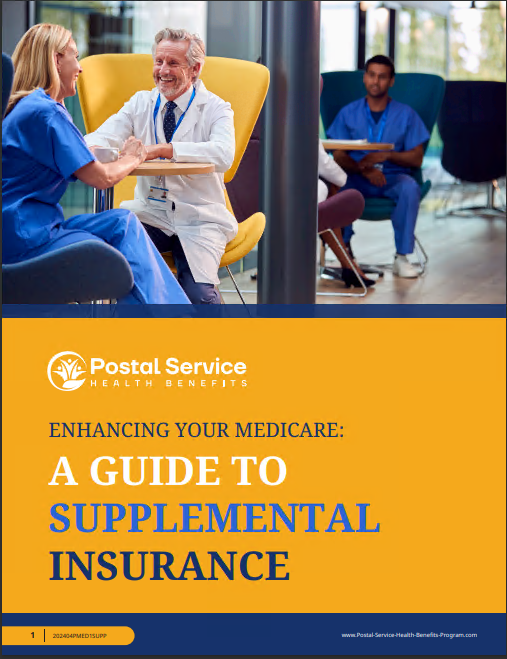Coordinating PSHB and Medicare Benefits: A Short Guide for USPS Retirees
Coordinating Postal Service Health Benefits (PSHB) with Medicare benefits is not only important but also complex for USPS retirees. Maximizing healthcare coverage while minimizing out-of-pocket expenses requires a thorough understanding of how these two programs interact. This article aims to provide USPS retirees with insights into the coordination of PSHB and Medicare benefits, covering eligibility criteria, enrollment processes, coverage options, and key considerations to help retirees navigate this intricate landscape effectively.
Understanding PSHB and Medicare
Before delving into coordination strategies, it’s essential to grasp the fundamentals of both PSHB and Medicare:
- PSHB: The Postal Service Health Benefits (PSHB) program furnishes comprehensive health insurance coverage for USPS employees and retirees, encompassing medical, dental, vision, and prescription drug benefits. Administered by the U.S. Postal Service, PSHB is tailored to address the distinct healthcare needs of USPS personnel and their families.
- Medicare: Medicare is a federal health insurance program primarily intended for individuals aged 65 and older, as well as certain younger individuals with disabilities. It consists of several parts, including Part A (hospital insurance) and Part B (medical insurance), each covering various healthcare services.
Understanding the fundamental components of PSHB and Medicare is essential for USPS retirees as they navigate the coordination of their healthcare benefits in retirement.
Coordinating PSHB and Medicare Coverage
Coordinating PSHB and Medicare benefits involves understanding the interplay between these two programs to ensure comprehensive coverage:
- Primary and Secondary Coverage: Depending on retiree status, eligibility criteria, and specific healthcare services, PSHB and Medicare may function as primary or secondary insurance. Discerning which program serves as primary or secondary coverage for different services aids retirees in navigating claims processing and minimizing out-of-pocket expenses. For example, PSHB may serve as primary insurance for certain services, while Medicare acts as secondary insurance.
- Enrollment Timing: Timing is crucial when enrolling in Medicare Part B, particularly for retirees eligible for PSHB coverage. While enrollment in Medicare Part A is typically automatic, enrolling in Part B may be necessary to seamlessly coordinate with PSHB benefits. Retirees should be aware of their initial enrollment period (IEP) for Medicare and consider factors such as retirement date and eligibility for PSHB coverage when deciding when to enroll in Part B.
- Medicare Advantage Plans (Part C): Medicare Advantage (Part C) plans offer an alternative to receiving Medicare benefits, often including additional benefits beyond original Medicare. These plans may impact coordination with PSHB coverage, necessitating careful consideration and comparison of plan options. Retirees should evaluate the network of healthcare providers, coverage options, and costs associated with Medicare Advantage plans to determine if they align with their healthcare needs and preferences.
- Prescription Drug Coverage (Part D): Medicare Part D provides prescription drug coverage, which may overlap with or complement prescription drug benefits offered by PSHB plans. Retirees should evaluate their prescription drug needs and consider enrolling in Medicare Part D for comprehensive coverage. Comparing the formularies, premiums, and coverage gaps of Medicare Part D plans with their PSHB prescription drug coverage can help retirees make informed decisions about enrollment.
- Medicare Supplement Insurance (Medigap): Medicare Supplement Insurance (Medigap) policies can help cover out-of-pocket costs not covered by original Medicare. These policies can complement PSHB coverage, providing additional financial protection against healthcare expenses. Retirees should carefully compare Medigap plans, considering factors such as coverage benefits, premiums, and availability in their area, to determine the most suitable option for their needs.
Key Considerations for USPS Retirees
When coordinating PSHB and Medicare benefits, USPS retirees should take into account several crucial factors:
- Coverage Needs: Assessing individual healthcare needs, including medical, dental, vision, and prescription drug coverage, enables retirees to determine the most suitable combination of PSHB and Medicare benefits. Considerations may include chronic health conditions, anticipated medical expenses, and preferences for healthcare providers and services.
- Cost Considerations: Evaluating premiums, deductibles, copayments, and out-of-pocket expenses associated with PSHB and Medicare plans ensures affordability and financial stability in retirement. Retirees should consider their budgetary constraints, retirement income, and potential changes in healthcare needs when comparing costs between PSHB and Medicare options.
- Provider Networks: Confirming that preferred healthcare providers participate in the networks of both PSHB and Medicare plans is essential for maintaining access to quality care. Retirees should review provider directories, consider travel distance to healthcare facilities, and verify coverage for specialty services to ensure continuity of care.
- Enrollment Deadlines: Awareness of enrollment deadlines for both PSHB and Medicare helps retirees avoid gaps in coverage and potential late enrollment penalties. Retirees should mark their calendars for important dates, such as their initial enrollment period (IEP) for Medicare, and be proactive in enrolling in or making changes to their healthcare coverage as needed.
Conclusion
Coordinating Postal Service Health Benefits (PSHB) with Medicare benefits is crucial for USPS retirees to maximize healthcare coverage and minimize out-of-pocket expenses. By understanding the interaction between PSHB and Medicare, enrolling in the appropriate parts of Medicare, evaluating coverage options, and considering individual healthcare needs and preferences, retirees can navigate this complex process effectively. Consulting with licensed insurance agents specializing in Medicare and accessing resources provided by the USPS can provide retirees with valuable guidance and support in coordinating their healthcare benefits. With careful planning and informed decision-making, USPS retirees can ensure comprehensive coverage and peace of mind in retirement.





